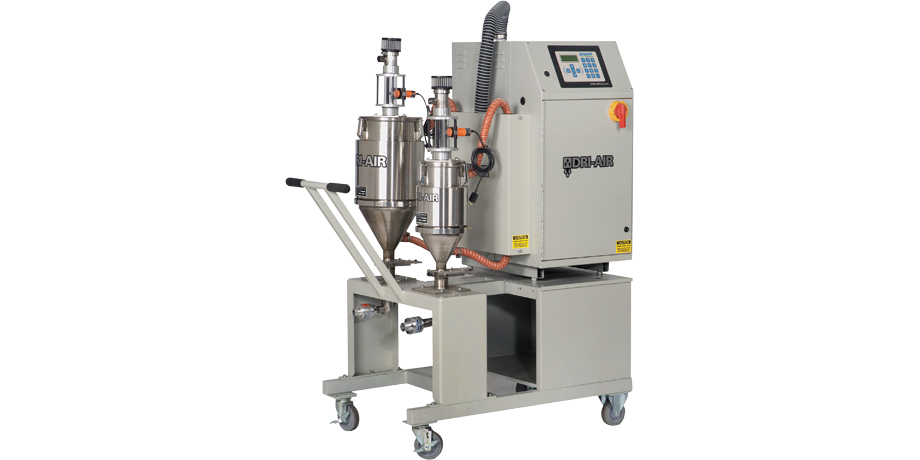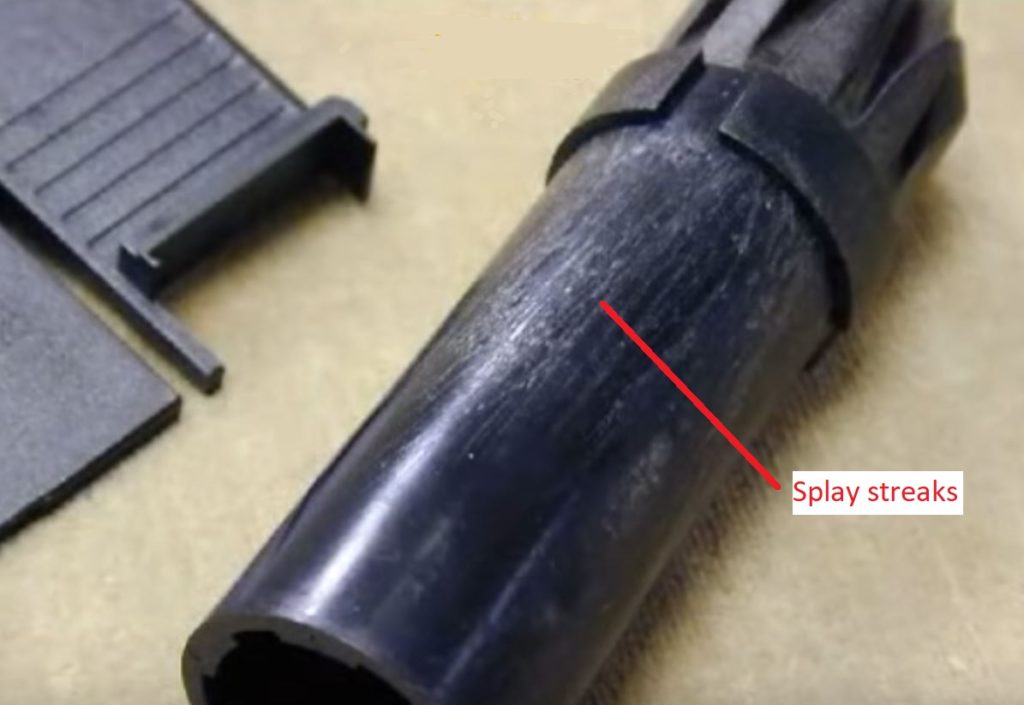
This article is meant to help those who have little to no understanding of drying plastic resins.
There are many different types of plastic resins, but they can all be split into two basic categories: hygroscopic or non-hygroscopic. The definition of hygroscopic is: of a substance tending to absorb moisture from the air. This means that some plastic resins/pellets absorb moisture just by being expo

sed to ambient air. (note that the surrounding “ambient” air we are exposed to is always considered moist/wet unless it is at 0 or negative F in dew point, this includes the air inside of material conveying lines and hoppers.)
The moisture that gets absorbed deep within a pellet can have negative effects to the quality of whatever product is being molded, and it then becomes necessary to dry the pellet before molding. Some of these “negative effects” are:
Splay or Steam typically visible streaks or bubbles in or on the end-product caused by the boiling of the moisture in the pellet that becomes gas/steam.

- The loss of the strength in end products. The moisture in the plastic weakens the molecular bonds in the plastic, which can cause the end product to be brittle.
- Inconsistencies in the injection molding or extrusion process caused by the fluctuations in viscosity of the resin which is a major factor in injection molding / extrusion. One major example of this is with Nylon, which will actually spit or drool out of the nozzle when purging if it is not dried properly.
How to Dry Hygroscopic Resins
There are 4 main factors that must be met and precisely controlled to dry hygroscopic resins.
One common misconception about drying material is that the “wetness” of resin is the topical surface moisture, but the actual moisture content of a plastic pellet is measured in parts per million (PPM) and refers to the moisture content within a pellet.
![]()
Temperature
All hygroscopic resins have a specific temperature set point that they must be at to release the moisture within the pellet. It is important to know that if the material is below the predetermined temperature set point, even if it were to be left in a dryer all night it may l never release the moisture within the pellet (be dry). It is also important to note that raising the temperature above its specified setpoint is not an acceptable shortcut to drying it more quickly.
![]()
![]()
Air Flow & Dry Air
The next two factors work hand in hand, so they will be discussed together. Once the resin is at the right temperature to release the moisture it has absorbed, The released moisture must then be moved away. In order to both evenly distribute heat throughout the resin and move away the released moisture, there must be enough air flow, and the air must be dry. If the amount of air flowing through the resin is insufficient, or the dew point (the measurement of how dry air is, in either F. or C.) is not low enough, the moisture that is released from the resin will not get absorbed by the flow of air, and won’t get carried away. This will just result in the resin reabsorbing the moisture, and either take more time to dry, or just never get dried. The industry standard for how dry the air must be from a dryer is -40F., but it can range from -20F. to -80F depending on the type of desiccant being used, and the regeneration/life cycle of the desiccant. Note: For Most materials, having a -20F. dew point vs -50F. dew point will make no noticeable difference on how quickly the material is dried.
![]()
Residence Time
Residence time, the time required to dry a resin, in the real world, is constantly changing due to circumstances such as:
- how wet is the material to begin with
- how humid is the weather on the day you are drying the material
- how dry do you actually need the material to be to achieve quality results
- how many of the other 3 factors (mentioned above) are being met optimally
- how efficient is your dryer (at meeting the other 3 factors of drying),
- how much moisture is being regained during the process of getting the material from the drying hopper to the feed throat of your injection molding machine, extrusion line, or blow molding machine.
With all these considerations every type of resin has a predetermined residence time set by the manufacturer which is usually 4 to 6 hours of drying.
With that being said, once you have a properly sized dryer, you will need to follow these steps to start the molding/extrusion process.
- Fill the drying hopper with your resin.
- Set the dryer to the temperature specified by the resin’s manufacturer.
- Let the material dry for the specified residence time (for example, 4 to 6 hours).
- Convey the material from the dryer to your machine’s feed throat. (unless the dryer is directly on your machine’s feed throat, in which case, you are ready to start molding/extruding.)
- Start molding! (note: for every x amount of material you are processing, you must add the same amount of material back into the drying hopper simultaneously, or you will not achieve the proper residence time of drying for your resin.
For your plastic resin or pellet drying needs, Hirate America partners with Motan and Dri Air Industries, Inc.


If you have a project that you would like to discuss, feel free to contact us below to schedule a free consultation.

